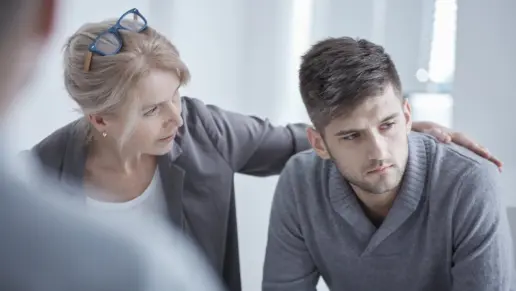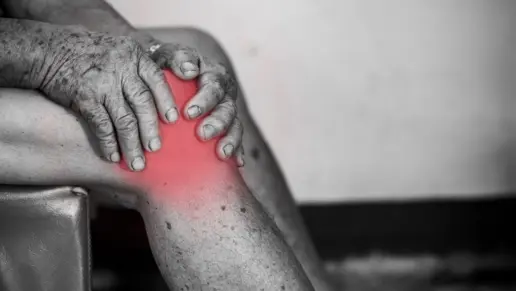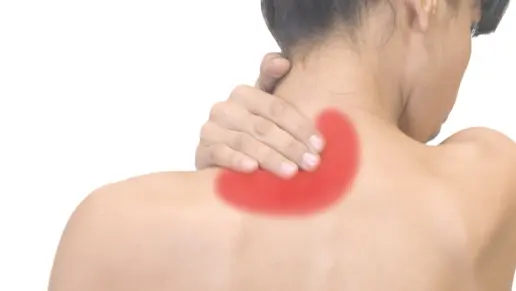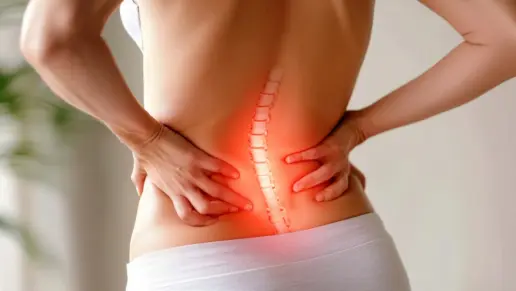Oxymorphone is a Schedule II narcotic to treat acute and chronic pain that’s not relieved by other analgesics. You can get prescriptions for its generic form in tablets that have immediate or timed releases.
But you should know that oxymorphone isn’t prescribed unless a patient has documented resistance to other pain medications.
Oxymorphine was popularly known by the brand name Opana ER. This brand was removed from the market in 2017 after the FDA concluded that the public’s misuse of the medication significantly contributed to the opioid epidemic. The manufacturer of Opana ER attempted to reformulate the medication but was unsuccessful.
FAQs about Oxymorphone
One common question asks, is oxymorphone synthetic or natural? It’s actually a semi-synthetic. The difference between oxymorphone and morphine is that oxymorphone is a human-made opioid. Morphine on the other hand is a natural substance derived from opium poppy plants.
Oxymorphone vs. Oxycodone
Oxymorphone sounds a lot like oxycodone. But oxymorphone is more potent than oxycodone. Oxycodone is often prescribed for chronic pain management in tablet form, like oxymorphone. Oxymorphone may produce side effects such as fever or confusion. Oxycodone may result in low energy and difficulty sleeping.
Oxycodone is also widely available in extended release form. This makes the medication potentially more potent which could amplify side effects and increase overdose risk.
Hydromorphone vs. Oxymorphone
Hydromorphone is stronger than oxycodone, but weaker than oxymorphone. It’s also a synthetic opioid and is often referred to by the brand name Dilaudid.
It comes in immediate- and extended-release versions. Hydromorphone is also available as an oral solution or injection. It’s often used in pain management after surgeries due to its potency.
The main difference between these medications is their strength and how they’re used for pain management. Oxymorphone is the strongest, oxycodone is the weakest, and hydromorphone has a middle ground. However, they all carry a high risk for misuse and overdose.
While the chemical compounds are slightly different and the medications may impact different neuro receptors in the brain, all three result in the same effect of euphoria.
There may be slight differences in side effects, such as nausea, respiratory depression, and extreme sedation. Given that people respond differently to medication, side effects may vary.
Is Opana (Oxymorphone) Addictive?
Oxymorphone is listed as a controlled substance because it’s considered a high risk for dependency. Research indicates 70% of all substance use disorders worldwide are attributed to various types of opioids, and these opioids are responsible for the global epidemic of opioid overdose deaths.
The staggering death rate from opioid overdoses in the United States resulted in the FDA and the DEA enacting new protocols for prescribing opioids.
These agencies have also reduced the number of manufacturers of opioids and issued stricter penalties for violations. They have also requested that some manufacturers pull selected medications from the market.
Signs of Oxymorphone Abuse
Side effects of oxymorphone are similar to those in all opiate medications. Nausea, vomiting, and gastrointestinal pain and swelling are among the most frequently reported. Additionally, flushing, excessive sweating, rapid heart rate and excessive sedation are other notable side effects. Dizziness, lightheadedness, and fainting can also result.
The most dangerous oxymorphone side effect is the suppression of the respiratory system. A person may fall into a coma and stop breathing. This risk played a major role in the FDA’s decision to pull Opana from the market.
Oxymorphone is commonly taken like other opioids. They can be ingested through snorting, taken orally, or injected by mixing oxymorphone powder with other chemicals to produce a liquid.
Like other opioids, oxymorphone may cause someone to appear to be in a stupor, dazed, or nodding off to sleep. Their skin can appear cold and clammy, with constricted pupils, and they may appear completely limp.
Signs of addictive behavior include disappearing for extended periods of time with no explanation of where they have been or what they have been doing. Other signs can include unexplained disappearances of medications prescribed to someone else in the family or objects of value that are cashed to buy street drugs.
Changes in personal hygiene, intense cravings, and committing acts of desperation to obtain more drugs are also signs.
The most dangerous element of an opioid use disorder is the purchasing of pills on the street marketed as oxymorphone or another type of opioid. Many of these are counterfeit pills and have not been obtained from a pharmacy.
These unregulated pills are frequently laced with fentanyl and may contain lethal doses. If oxymorphone is mixed with another opioid, the danger of respiratory failure is magnified. Multiple overdoses requiring resuscitation through the use of Narcan or other interventions are evidence of a life-threatening disorder.
Opana (Oxymorphone) Withdrawal and Detox
Opioids create a physical dependence by building tolerance, in which users require increasing amounts of the drug to obtain the same result. Immediate cessation will cause uncomfortable withdrawal symptoms such as nausea and vomiting, insomnia, restlessness, muscle and joint pain.
People who quit “cold turkey” report feeling restless, sweaty, and chills, prickly skin, and anxiety. Some have described the symptoms as similar to having a bad case of the flu. Others have reported they have continued using opioids to avoid these uncomfortable withdrawal symptoms.
Detoxification is a medical intervention that assists a person in removing the drugs from their system to ease the withdrawal process. A medically supervised detox program can use synthetic opioid medications, such as Suboxone and methadone, to slowly taper the client through their physical withdrawals.
The goal is to keep a client comfortable during the process to ensure greater success in maintaining recovery. Research has indicated that a medically supervised detox of the withdrawal process produces a higher success rate in helping a person remain in recovery long term.
Rehab and Treatment Options for Oxymorphone Dependency
If repeated negative consequences fail to deter behavior, and a person is unable to stop using in spite of legal consequences, health problems, and the destruction of relationships, they may benefit from an intervention and treatment.
Harm Reduction
Pre-treatment harm reduction services are available through public health and other government funded programs.
This may take the form of distributing sterile needles or Narcan distribution. Narcan may be used to revive a person from an opioid overdose, and it often prompts the user to make lifestyle changes to prevent further lethal overdoses.
Medication Assisted Treatment (MAT)
Inpatient medication assisted treatment (MAT) is a long-term process to overcome opioid use disorders.
Synthetic opioid medications, such as Suboxone, are used to ease withdrawal symptoms, allowing for either gradual tapering or long-term maintenance to support recovery and prevent relapse. These medications last longer in the system and can prevent cravings and extreme discomfort.
Outpatient medication assisted treatment uses FDA-approved medications, such as naltrexone, methadone, and Suboxone as ongoing support for opioid use disorder.
By combining medication with counseling services, clients are supported in relapse prevention for as long as the need presents. A user may be on an outpatient MAT program even after they graduate from a residential program.
Inpatient Treatment
Inpatient treatment programs last between 25 and 30 days and are covered by most insurance carriers. Beyond managing withdrawal, they offer medical supervision, counseling, behavioral therapies, and relapse prevention support to help individuals build a stable foundation for recovery.
The inpatient program also provides housing, meals and daily activities. Services may include group meetings, individual counseling, psycho-educational sessions, recreational and expressive therapy, cognitive behavioral restructuring, eye movement desensitization and reprocessing (EMDR), and other trauma-informed treatments.
Intensive Outpatient Treatment
Intensive outpatient treatment is a counseling program that lasts for 10-12 weeks and meets in a group usually up to three times a week. Individual sessions may also be included. Most insurance carriers will pay for IOP.
Through IOP, the client develops a relapse prevention strategy by focussing on building a peer support system and exploring core issues that can trigger cravings.
Outpatient Treatment
Outpatient treatment is an ongoing counseling program that allows clients to reduce the level of care as your recovery strengthens. It can meet as a group or as individual sessions. Outpatient treatment is designed as a maintenance program or as a follow up to other levels of treatment.
Peer Support
Peer support programs are social support systems that provide emotional, informational, instrumental, and affiliation support for recovery. Programs specific to opiate use recovery include Opiates Anonymous (OA) and Narcotics Anonymous (NA). There are many others such as Dual Recovery Anonymous (DRA), Women in Recovery, (WIR), and SMART Recovery.
Many of these programs are based on the Alcoholics Anonymous’ 12 Steps with modifications specific to philosophical differences. Local listings can give you further information on meeting frequency and locations.
Additional private and nonprofit social service organizations can also help you reintegrate into society with food, housing and financial support.
If you or someone you know is struggling with an opioid use disorder, please seek treatment. Treatment facilities and providers can be explored through Rehab.com.
Addiction Centers That Treat Opioid Addiction
Finding facilities near you…





